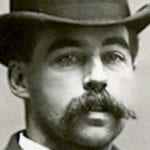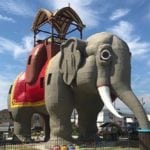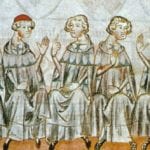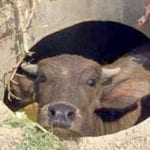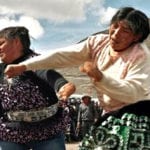 Politics
Politics  Politics
Politics  Weird Stuff
Weird Stuff 10 Eggs-traordinarily Odd Eggs
 History
History 10 Desperate Last Stands That Ended in Victory
 Animals
Animals Ten Times It Rained Animals (Yes, Animals)
 Mysteries
Mysteries 10 Devastating Missing Child Cases That Remain Unsolved
 Creepy
Creepy 10 Scary Tales from the Middle Ages That’ll Keep You up at Night
 Humans
Humans 10 One-of-a-kind People the World Said Goodbye to in July 2024
 Movies and TV
Movies and TV 10 Holiday Movies Released at Odd Times of the Year
 Politics
Politics 10 Countries Where Religion and Politics Are Inseparable
 Weird Stuff
Weird Stuff 10 Freaky Times When Famous Body Parts Were Stolen
 Politics
Politics The 10 Most Bizarre Presidential Elections in Human History
 Weird Stuff
Weird Stuff 10 Eggs-traordinarily Odd Eggs
 History
History 10 Desperate Last Stands That Ended in Victory
Who's Behind Listverse?

Jamie Frater
Head Editor
Jamie founded Listverse due to an insatiable desire to share fascinating, obscure, and bizarre facts. He has been a guest speaker on numerous national radio and television stations and is a five time published author.
More About Us Animals
Animals Ten Times It Rained Animals (Yes, Animals)
 Mysteries
Mysteries 10 Devastating Missing Child Cases That Remain Unsolved
 Creepy
Creepy 10 Scary Tales from the Middle Ages That’ll Keep You up at Night
 Humans
Humans 10 One-of-a-kind People the World Said Goodbye to in July 2024
 Movies and TV
Movies and TV 10 Holiday Movies Released at Odd Times of the Year
 Politics
Politics 10 Countries Where Religion and Politics Are Inseparable
 Weird Stuff
Weird Stuff 10 Freaky Times When Famous Body Parts Were Stolen
10 Stories About The 20th Century’s Strangest Mystical Warlord
In 1986, an Italian soldier and polymath, able to speak 74 languages, led thousands of hymn-singing Christian soldiers marching in cross-shaped formations in an attack on Uganda’s capital.
To make thing even stranger, the Italian was dead at the time, having drowned in the Nile during World War I. His spirit spoke through a middle-aged fishmonger, and together, they led one of the strangest and most tragic armed uprisings in modern history.
10The Fishmonger Of Opit
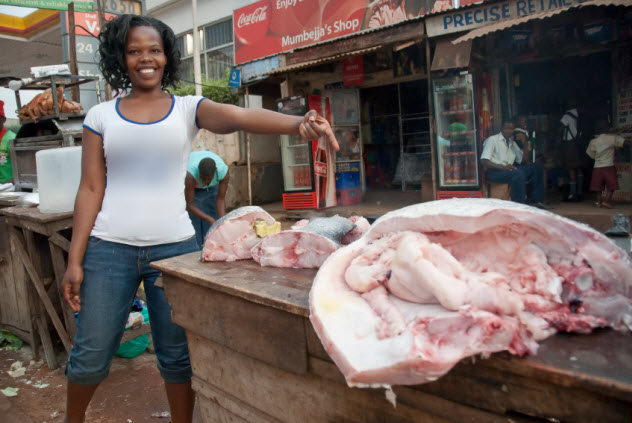
In 1985, a woman named Alice lived in the town of Opit in northern Uganda. She had been married twice, but both husbands left after learning that she could not have children. So she went by her maiden name, Auma.
As a child, she had fallen mysteriously ill and had to leave school at a young age, leaving her illiterate. To make a little money, she would catch the train to Pakwach, where she traded flour for fish to sell in Opit. It was later rumored that she also worked as a prostitute, but many things were later rumored about Alice Auma.
If Alice did have a claim to fame in those days, it rested with her father, Severino Lukoya, a catechist in the Anglican Church and a prominent figure in the community. In 1958, Severino fell while fixing his roof and had a near-death experience in which he was carried up to Heaven and met Moses, David, Abraham, and God himself.
As Severino regained consciousness, a mighty voice spoke to him: “All these spirits will come to your children. A choice has already been made among your children.”
But none of Severino’s children demonstrated any connection to the spirit world, and the prophecy had largely been forgotten by the ’80s. As the civil war wracking Uganda drew closer, Alice continued to catch the train into Pakwach to trade flour and fish. She was in her thirties and quite ordinary.
Then, on May 25, 1985, the spirit Lakwena came to her.
9The Messenger
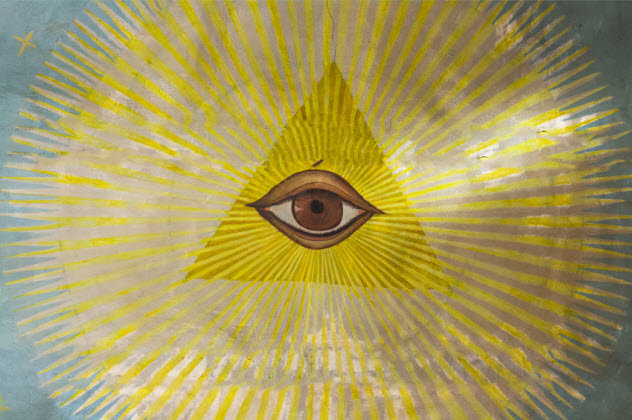
Alice and her father were Acholi, a northern Ugandan ethnic group who played a large and tragic role in the country’s turbulent post-independence period. Idi Amin persecuted and massacred them, but they gained a degree of power under Milton Obote and Tito Okello, himself an Acholi.
When Yoweri Museveni overthrew Okello, many Acholi formed armed groups to fight him. These proved no match for Museveni’s experienced fighters, who made significant advances. Frustrated by a perceived lack of support, Acholi militias like the Uganda People’s Democratic Army (UPDA) turned against their own, raiding the towns and villages of Acholiland.
It was in this situation of worsening anarchy that Alice Auma felt herself being possessed by an unknown spirit of great power. The experience was so traumatizing that she was instantly struck deaf and dumb. Her puzzled father braved the turbulent countryside to seek out witch doctors and traditional healers, but no one could offer any help. Days went by, and Alice seemed completely unreachable. Then, suddenly, she left Opit and disappeared into the Paraa National Park. For 40 days and 40 nights, she remained in the wilderness. She emerged a changed woman.
Alice said that she had been chosen as the vessel of an entity she called Lakwena (which simply means “messenger” in the local Acholi dialect). Lakwena was supposedly the spirit of an Italian soldier who had drowned in the Nile in the early 20th century and subsequently become one of God’s chosen heralds on Earth. According to Alice, Lakwena led her deep into Paraa to an ancient site called Wang Jok, where he explained her new mission.
8And The Mountain Answered
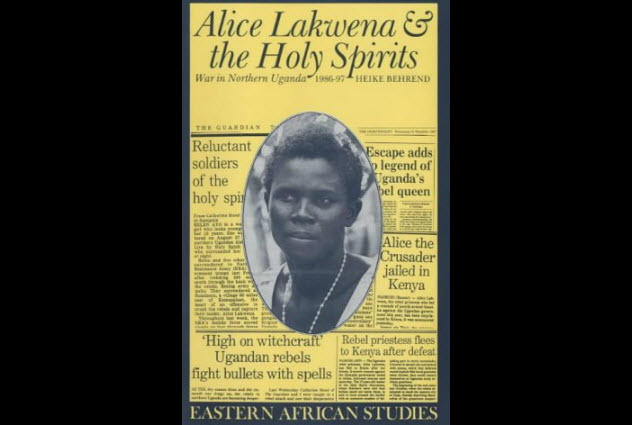
Long before the coming of the British, Wang Jok was considered a sacred place. A spirit called a jok lived there, attended by priests known as ajwaka. It was said that strange, precious things would emerge from the waters of the Nile where it ran past the jok’s shrine. But by Alice’s time, the shrine had been abandoned, and soldiers from various armed groups plagued the Paraa National Park, poaching animals with their machine guns. The ajwaka were long gone.
Alice’s experiences in Paraa were the foundation on which she built her movement. In Heike Behrend’s book, Alice Lakwena And The Holy Spirits, Alice’s follower Mike Ocan relates the official version:
Lakwena said to the animals: “You animals, God sent me to ask you whether you bear responsibility for the bloodshed in Uganda.” The animals denied blame, and the buffalo displayed a wound on his leg and the hippopotamus displayed a wound on his arm.
Lakwena said to the waterfall: “Water, I am coming to ask about the sins and bloodshed of this world.” And the Water said: “The people with two legs kill their brothers and throw their bodies into the water. [ . . . ] Go and fight against the sinners because they throw their brothers in the water.”
Lakwena said to the Mountain: “God has sent me to find out why there is theft in the world.” And the Mountain answered: “I have gone nowhere and stolen no one’s children. [ . . . ] This is the sin of the people. I want to give you water to heal diseases. But you must fight against the sinners.”
[Later] God said that there was a tribe in Uganda that was hated everywhere. This tribe was the Acholi. And God ordered . . . that they should repent their sins.
7Healing Uganda

At first, Lakwena told Alice that her mission was to be a healer, a traditional calling for Acholi spirit mediums. The mountain and the river gave her holy water with the ability to cure diseases, and she returned to Opit, where she converted her father to her cause.
Together, Alice and Severino built a crude thatched temple near the train tracks. Inside, Alice sat on a throne and channeled the spirit. Soon, people began to journey from miles around to be healed by the combined entity now known as Alice Lakwena. Significantly, many were soldiers who had been injured in the war.
Some traditionalists grumbled about a cult being formed around an ordinary woman like Alice. But Lakwena silenced them in his booming voice. He said that he had chosen Alice because she was a woman and a sinner. If Alice could be saved, surely there was hope for the rest of the Acholi.
The period is not well documented, but Alice either had some success as a healer or the charisma to mask her failures. A growing following was attracted to her unusual blend of Christianity and traditional spiritualism. Yet no healing water could salve the worsening chaos in Acholiland. Museveni’s troops and the Acholi militias were grinding away in a bloody stalemate, and the death toll rose by the day.
Finally, in August 1986, Lakwena declared that enough was enough: “The good Lord who had sent the Lakwena decided to change his work from that of a doctor to that of a military commander for one simple reason: It is useless to cure a man today only that he be killed the next day.”
Alice, Lakwena commanded, must prepare herself for war.
6A Sinful Boar

Under Lakwena’s direction, Alice announced the formation of the Holy Spirit Movement (HSM), whose forces would overthrow the wicked government and rebel groups alike, restoring peace and righteousness to Uganda. Accounts of the movement’s first weeks are confused and contradictory, but we know that things began to take off for Alice when she moved to Kitgum and met with Stephen Odyek, a commander in the UPDA rebel group.
Odyek felt unable to hold his crumbling militia together much longer, and he was impressed by Alice and the soldier Lakwena. In October, he agreed to transfer 150 dispirited soldiers to the HSM.
Alice Lakwena set to work at once. Gathering her new soldiers, she told them that they were sinners, they had done terrible things, and they had killed, murdered, and raided even among their own people. She ordered them to sing hymns and throw away all their magical charms. She encouraged them to repent their wickedness.
At the end of the day, each soldier spat into the mouth of a boar, symbolically passing his evil into the animal, which Alice then sacrificed. It was irresistible. After a few more days of rituals, Alice’s soldiers attacked the government and won a dramatic victory. From all across the north, fighters began streaming to the HSM.
In fact, the HSM was perfectly tailored to attract recruits from the various Acholi rebel groups. At the time, most Acholi believed in a blend of Christianity and traditional Acholi spiritualism, both of which have extremely strong prohibitions against killing. So the Acholi soldiers who had taken lives felt that they were in danger of going to Hell and presumed that they were haunted by the spirits of those they had killed.
Alice Lakwena, an unusual blend of spirit medium and charismatic Christian, promised to cleanse them from their sins against the Lord and the spirits of the dead. Before long, the fish seller of Opit commanded an army of thousands.
5Legion
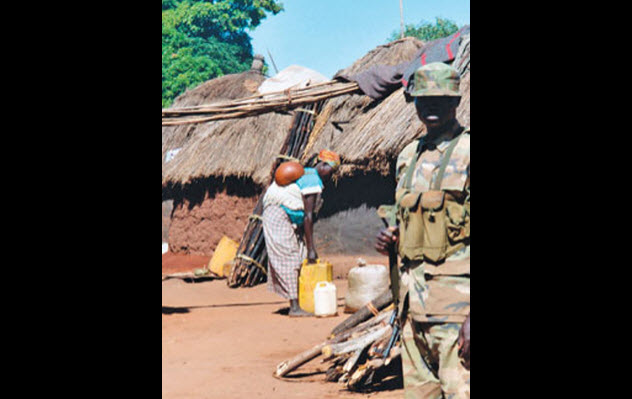
As a new year approached, the HSM won two spectacular victories in the north. Their tactics were unorthodox to say the least. They marched fearlessly into battle in huge cross formations, singing hymns and ignoring the bullets whizzing around them.
This should have been a disaster, but the psychological effect was so great that many enemy soldiers simply threw down their weapons and ran away. The government dismissed Alice as “a lunatic prostitute of Gulu Town turned witch,” and the remaining Acholi militias attacked her, too. But “the Army of Heaven” continued to grow.
Alice Lakwena held court twice a day, sitting on a white folding chair as her commanders jotted her instructions in school exercise books. Soldiers were to be anointed with shea butter or holy water, which would protect them from bullets. They were banned from aiming their weapons before firing them because this would constitute attempted murder.
Nature was on their side, and serpents would watch over the faithful while they slept. As a result, HSM soldiers were banned from killing snakes. Instead, these soldiers were supposed to salute the snakes as fellow soldiers. Mountains and rocks were with the HSM, while rivers could be bribed to drown their enemies. But trees and termite mounds were their deadly enemies.
As the HSM grew, Alice began to manifest a wide variety of spirits recruited by the Lakwena to help her command. There was Wrong Element, a loud American who headed the intelligence division. A Korean named Ching Po oversaw the HSM’s motor pool and mechanical needs. Franco from Zaire took care of provisions, while an Acholi called Nyaker acted as a nurse. But she spoke so quietly that nobody could hear her.
Nobody could understand a group of Islamic spirits, either, because they spoke only in Arabic. But everyone was impressed by their ferocity. All these spirits and more spoke through Alice, the chosen one of God, to the point that her followers could never be sure whether they were speaking to a spirit or Alice.
4Safety Precautions
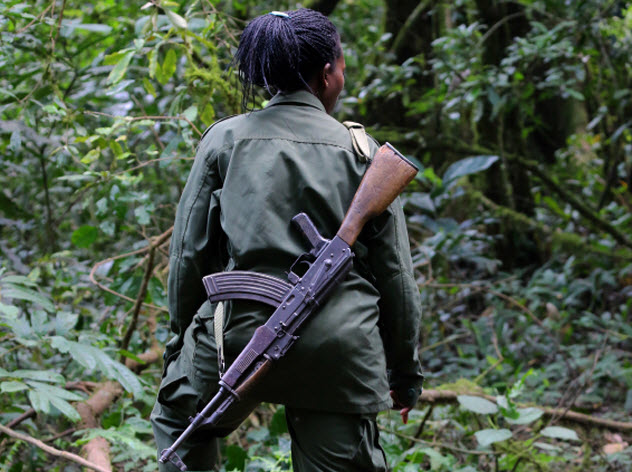
Alice’s central message was that Uganda’s problems “can only be biblically explained and resolved by turning to our Lord Jesus Christ and becoming God-fearing people.” As such, her commands were usually supported by a flood of Bible verses, neatly cited in the usual way.
Her most important pronouncements, the 20 Holy Spirit Safety Precautions, were typical. They included “Thou Shalt Not Smoke Cigarettes (I Cor 3:16–20)” and “Thou Shalt Not Kill Prisoners Of War (Lev. 19:18, 33–34; Mt. 6:14–15).”
Another key Holy Spirit Safety Precaution was “Thou Shalt Not Kill (Lev. 19:16; Deut. 5:17; Rm. 13:19).” This was obviously something of a drawback for a military force, and there were even reports of the HSM going into battle unarmed.
However, Alice eventually solved the dilemma by banning her soldiers from aiming their weapons. If the unaimed bullet actually hit someone, it was due to God’s will, and no blame was attached to the soldier.
A few Holy Spirit Safety Precautions were not cited because they were drawn from Acholi tradition rather than the Bible. These included “Thou Shalt Not Carry Any Walking Stick On The Battlefield” and Alice’s most famous commandment, “Thou Shalt Have Two Testicles, Neither More Nor Less.”
The insistence on two testicles shows up in most discussions of the HSM and is usually interpreted as an attempt to keep witches from joining, although some writers have suggested it was actually a joke that the media took seriously. After all, what’s the point in running a crusading army of the Lord if you can’t have a little fun with it?
In any case, it’s not clear how the insistence on two testicles would have worked given that men and women alike were welcome to join the HSM. There was even a special “women’s desk” to deal with any issues the female recruits encountered. The Lakwena himself declared that men and women were equal, overturning the traditional Acholi view on the matter. Things would be different in the Holy Spirit Kingdom.
3Saluting Snakes
Or so it seemed. Although the HSM was initially based among the rural poor, its extraordinary success soon began to attract recruits from all classes. Even former education minister Isaac Ojok joined.
According to one HSM member, a split soon developed between Alice’s early followers and these new, high-status recruits, who quickly monopolized leadership positions. Before long, women were prohibited from taking part in battles, and men came to dominate the HSM.
Alice’s success attracted others, including a young man named Joseph Kony, who was probably her cousin. Severino Lukoya has denied that they were related, but there are many reasons to deny any connection to Joseph Kony.
Kony is in many ways a mysterious figure, but his peers remember him as a friendly child who served as a Catholic altar boy. However, he eventually stopped attending church and became a witch doctor.
As a young man, he joined the rebel UPDA as a spiritual adviser, serving as a combination chaplain and propagandist. A charismatic preacher and spirit medium, he soon began to accumulate a following of his own. Piggybacking on Alice’s movement, he claimed that he, too, could channel Lakwena.
In 1987, Kony journeyed to Opit, expecting a prestigious position in the HSM. But Alice Lakwena could recognize a jackal. In a disastrous meeting, Lakwena humiliated Kony, rejecting his request for a command position and mocking him for not knowing the correct stones that could be transformed into grenades. According to Lakwena, the spirits Kony channeled were unsuited for warfare. Instead, he should stick to healing.
Furious, Kony left without saying a word, later vowing never to serve under a woman. That June, his followers attacked and murdered members of the HSM. But by then, Alice had no time for Kony. The HSM was marching south.
2Armageddon
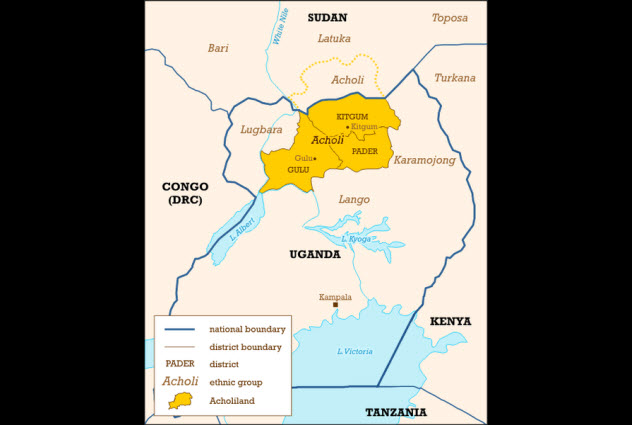
In late 1987, Alice ordered the HSM to move en masse toward the capital, Kampala. It was undoubtedly one of the most remarkable offensives of the 20th century, almost more pilgrimage than military operation.
Up to 10,000 HSM fighters marched south in huge cross formations, singing hymns and gleaming with bullet-repelling shea butter. They carried guns, charms, and rocks, which were said to explode like grenades when thrown.
The government forces melted away before them. By November, they had reached Jinja, less than 100 kilometers (60 mi) from Kampala. They were moving through the thick forests near the source of the Nile when the first artillery shell hit.
In truth, the HSM’s defeat had been predictable even before it moved south. In late 1986, Alice’s followers attacked government troops at Corner Kilak. As hundreds of fearless hymn singers emerged from the bushes surrounding their camp, the terrified soldiers simply threw down their weapons and beat a hasty retreat, handing the Lakwena a famous victory.
In early 1987, the HSM again assaulted a government camp at Corner Kilak. This time, the government troops simply mowed them down, killing 400.
Internal divisions were growing, too. HSM members noticed that Alice had begun contradicting the spirits who spoke through her, causing some to believe she was trying to take control herself. In response, Alice seemed to have “started literal witch hunts of wayward members.”
In this context, the decision to move south almost seems like a last throw of the dice to keep the HSM together. It wasn’t effective. Alice probably lost half of her original force on the way to Kampala.
She lost the rest in the forest of Jinja. The battle, if it can be called that, was horrific. The government pounded the area with heavy artillery and machine gun fire. As the shells ripped apart trees and hills, the HSM could only call on the spirits to help them.
When government forces came to inspect the killing ground, they found wire models of helicopters, sacrificed cats, tattered Bibles, and even an altar decorated with flowers. In a heartbreaking detail, they discovered that some HSM members had braved the bombardment to scoop out a trench “dug to resemble a river.”
As Alice always promised her followers, nature was on their side. “Water, if they were polite to it . . . would block the enemy.” There is no official casualty figure for the Battle of Jinja, but it was a slaughter from which the HSM never recovered.
1Ghost Dancers
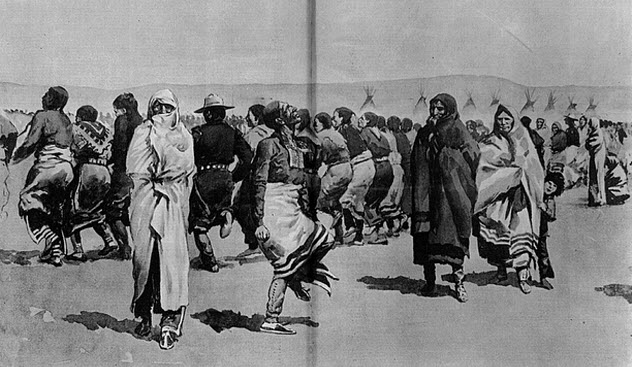
Alice herself escaped Jinja on a bicycle. She fled to Kenya, to the Ifo refugee camp, where she eked out a living as a minor faith healer, promising a cure for AIDS. She was a regular patron of the camp’s rough bars, where she favored gin and coke. The Lakwena, she said, had abandoned her at Jinja. Few mourned or even noticed when she died in 2007.
Alice’s father, Severino Lukoya, tried to keep the HSM going for a while, claiming that Lakwena now spoke through him. But the attempt quickly fizzled, and leadership of the War of Heaven devolved to Joseph Kony and his Lord’s Resistance Army (LRA).
To his discredit, Severino briefly pushed the idea of a “Holy Trinity” with himself as Father, Kony as Son, and Alice as the Holy Spirit. The alliance didn’t last, and Kony’s followers made Severino cry by burning his Bible.
There’s no denying that Kony lifted much of his ideology from Alice. For example, Kony’s followers believe in a holy oil capable of deflecting bullets, just as the HSM did. Kony is currently infamous for kidnapping child soldiers, which probably also happened under Alice (although to a lesser degree).
Even relatively benign aspects of the HSM became twisted under Kony. Alice had always told the Acholi that they were a particularly wicked people and must repent. Kony agreed with the first part but considered the Acholi beyond saving. He declared his intention to wipe them out entirely and build a “new Acholi” from his child soldiers in what Jeffrey Kaplan has called a “self-genocide.”
But it’s probably unfair to blame Alice for the rise of Kony, whom she rejected and who started the LRA in active opposition to her. Instead, it may be more telling to place her in a longer tradition of crisis prophets.
In 1890, the Paiute shaman Wovoka began the Ghost Dance movement, which included special shirts supposedly able to deflect bullets. The Ghost Dance spread quickly across Native American reservations but was eventually suppressed by the US government.
A decade earlier, a carpenter’s son in the Sudan gathered a few followers armed with sticks and declared himself the Mahdi, a messianic figure in Islam. Within a few years, he had defeated several Egyptian armies and established a short-lived state that was destroyed by the British after his death.
In the 15th century, Joan of Arc became a saint after angelic voices gave her the mission to save France. Perhaps Alice’s biggest problem was that she was simply born several centuries too late.
